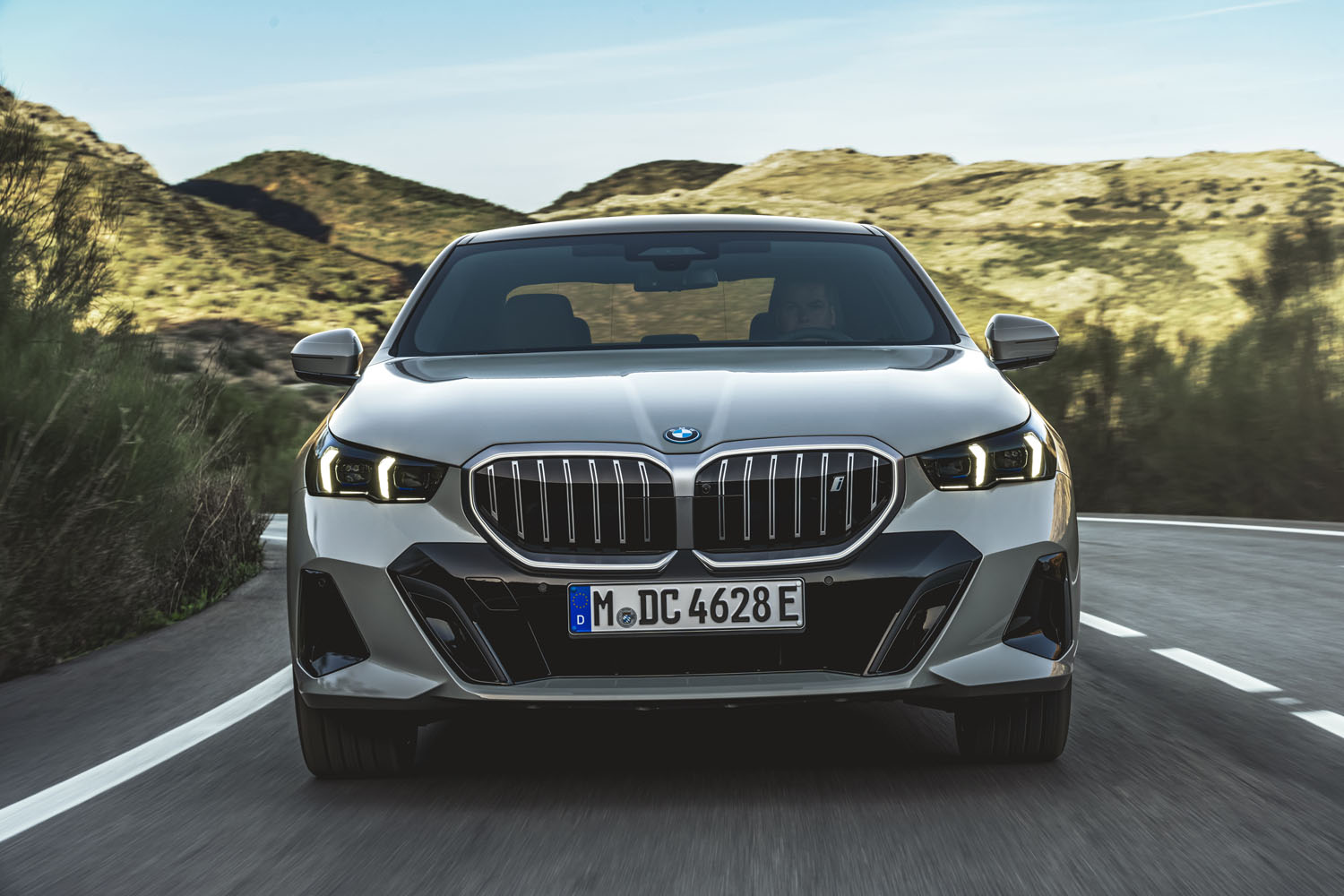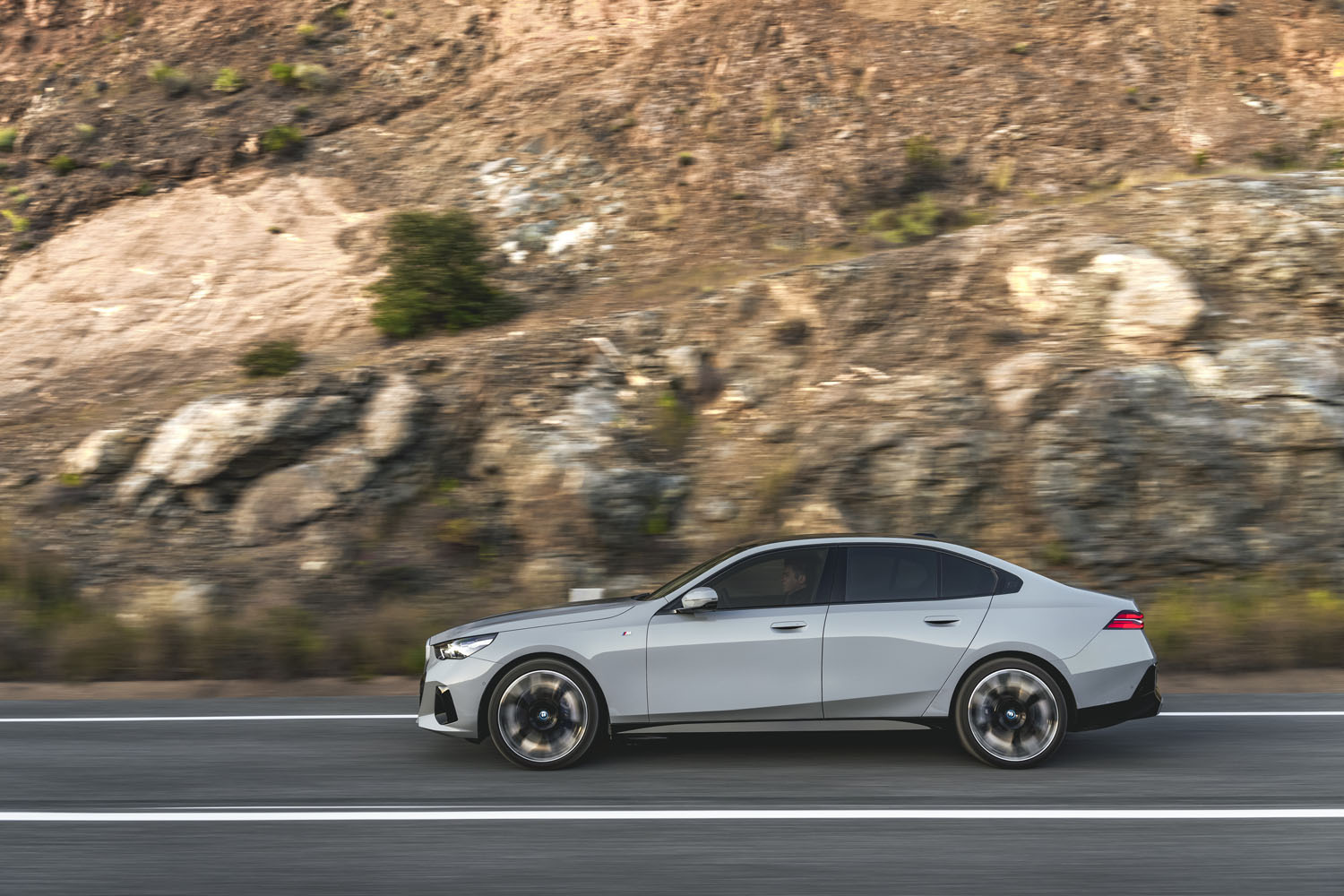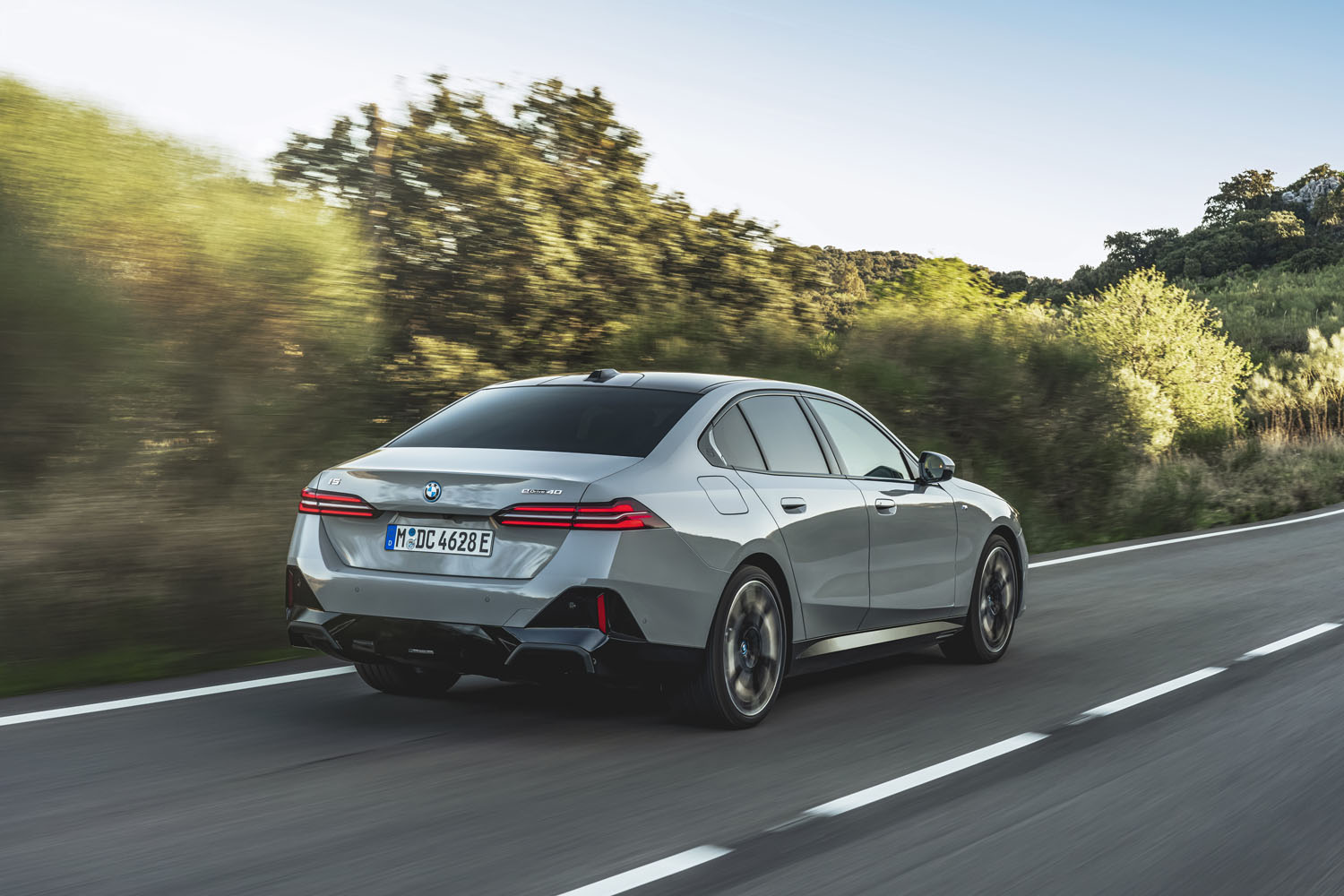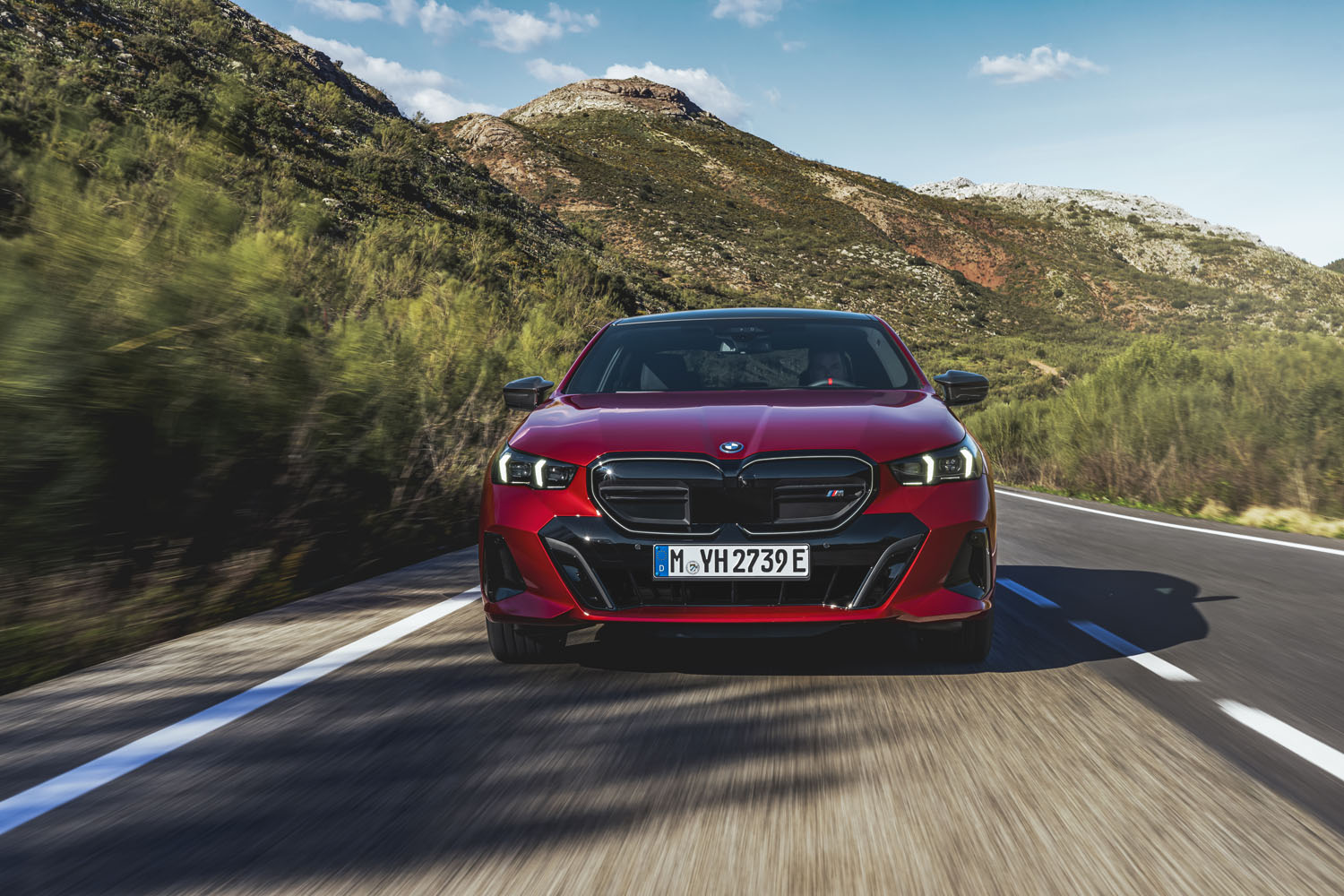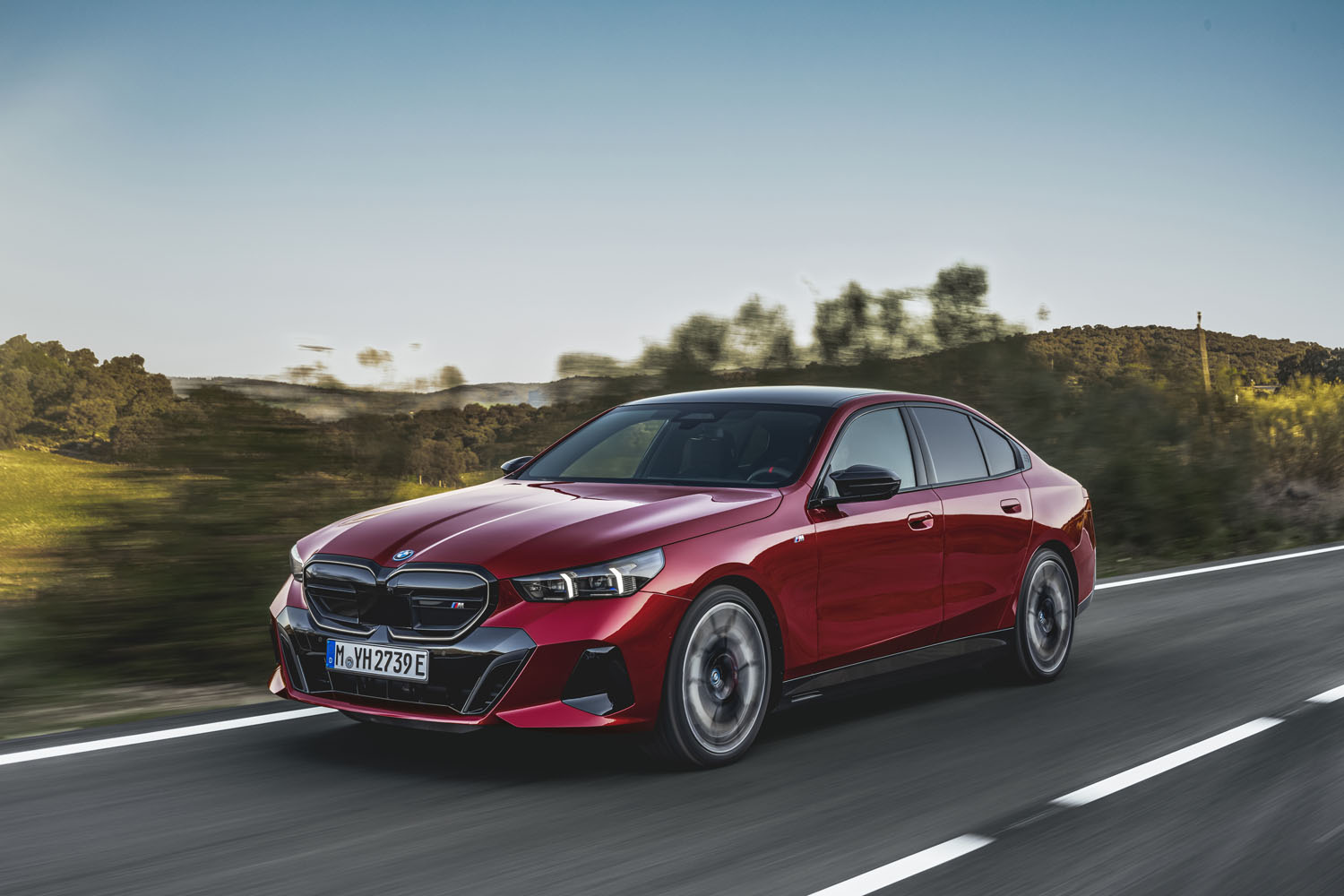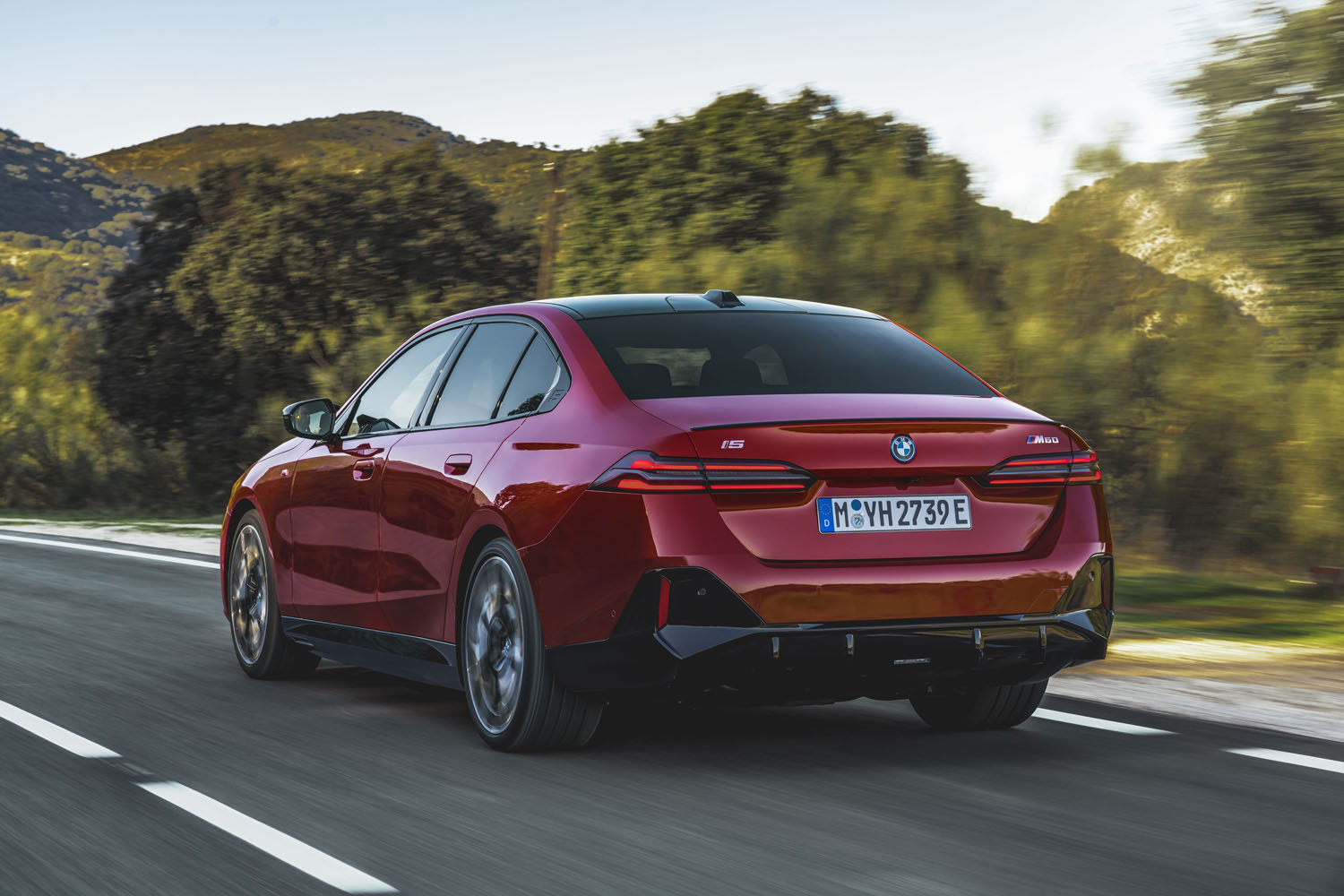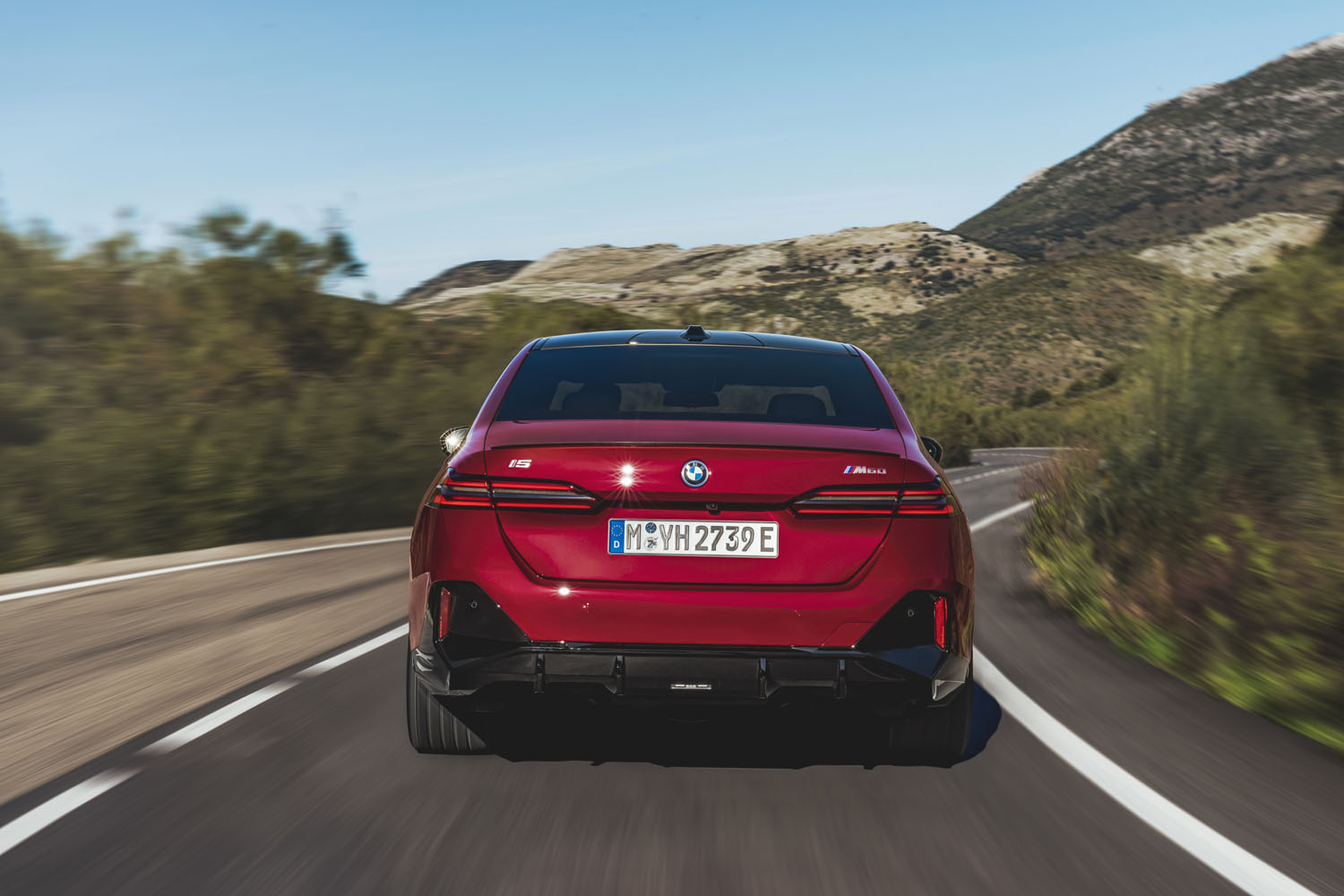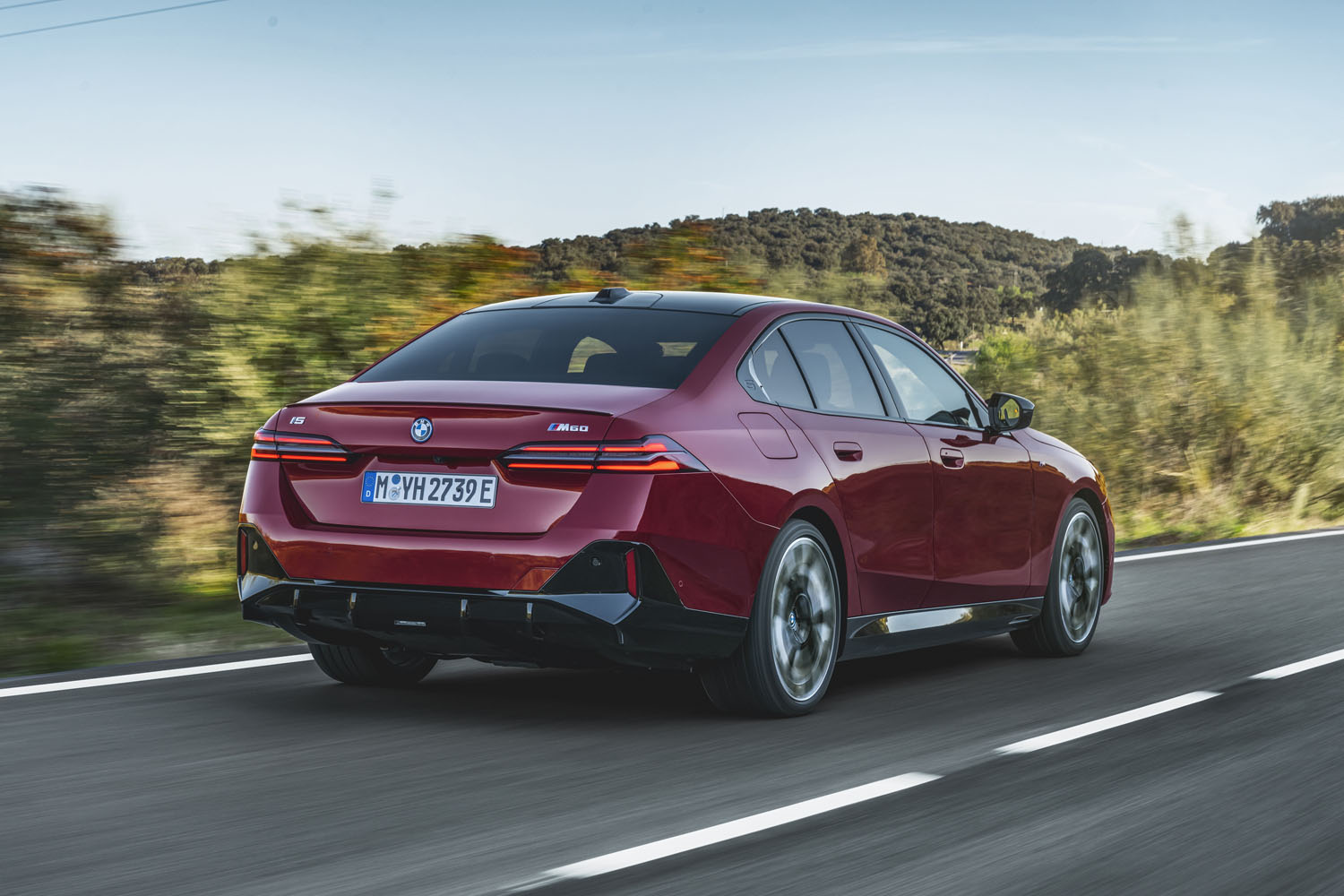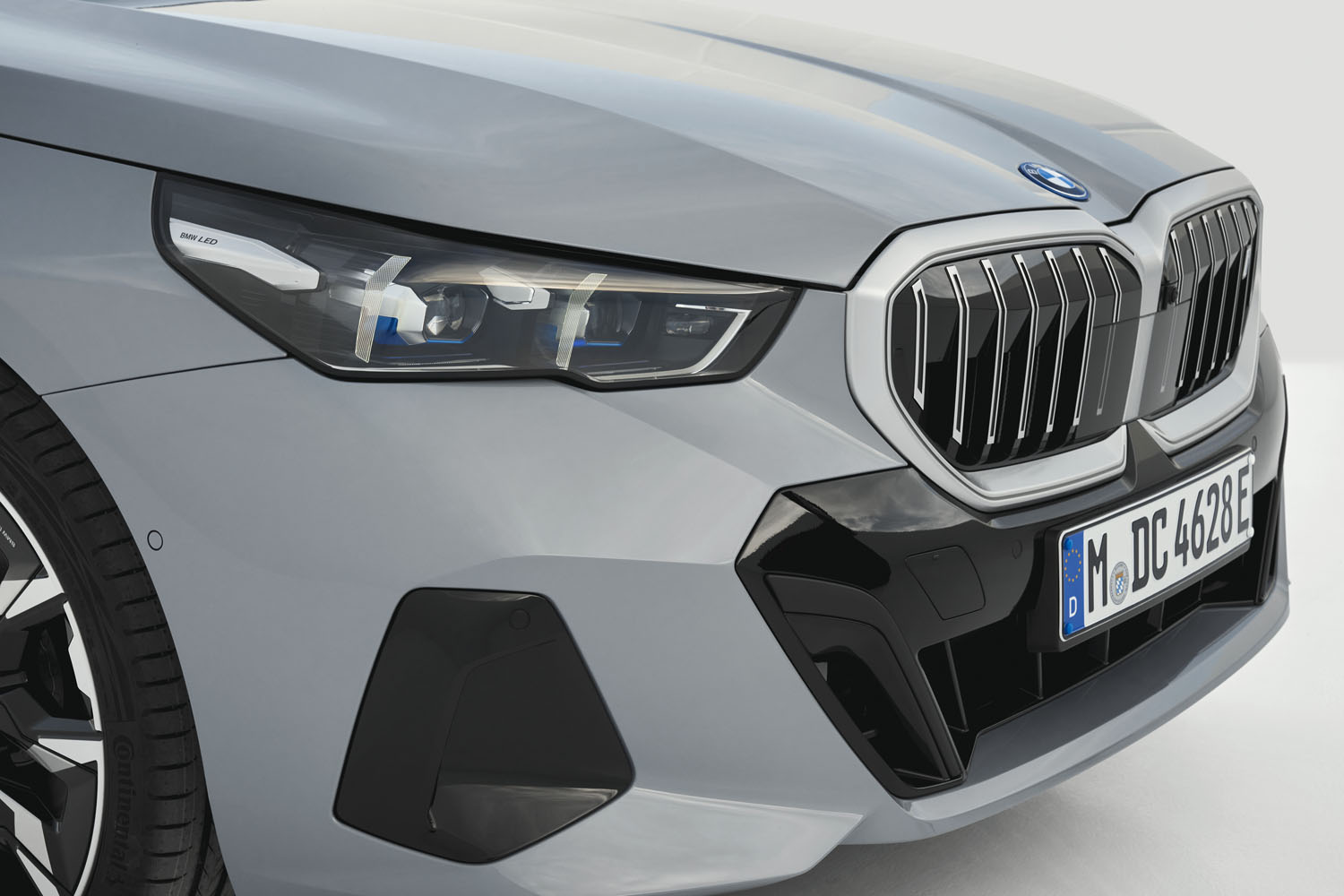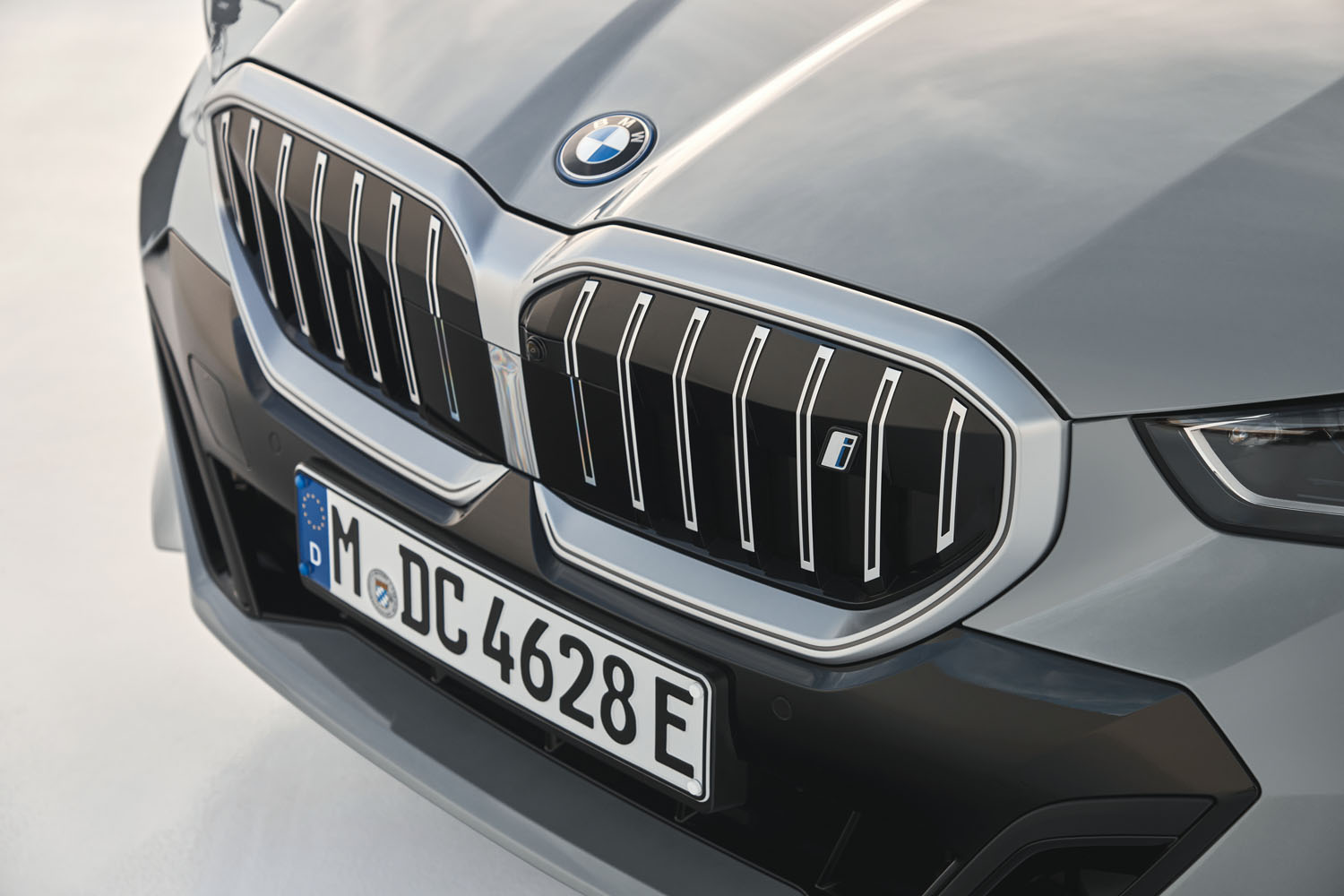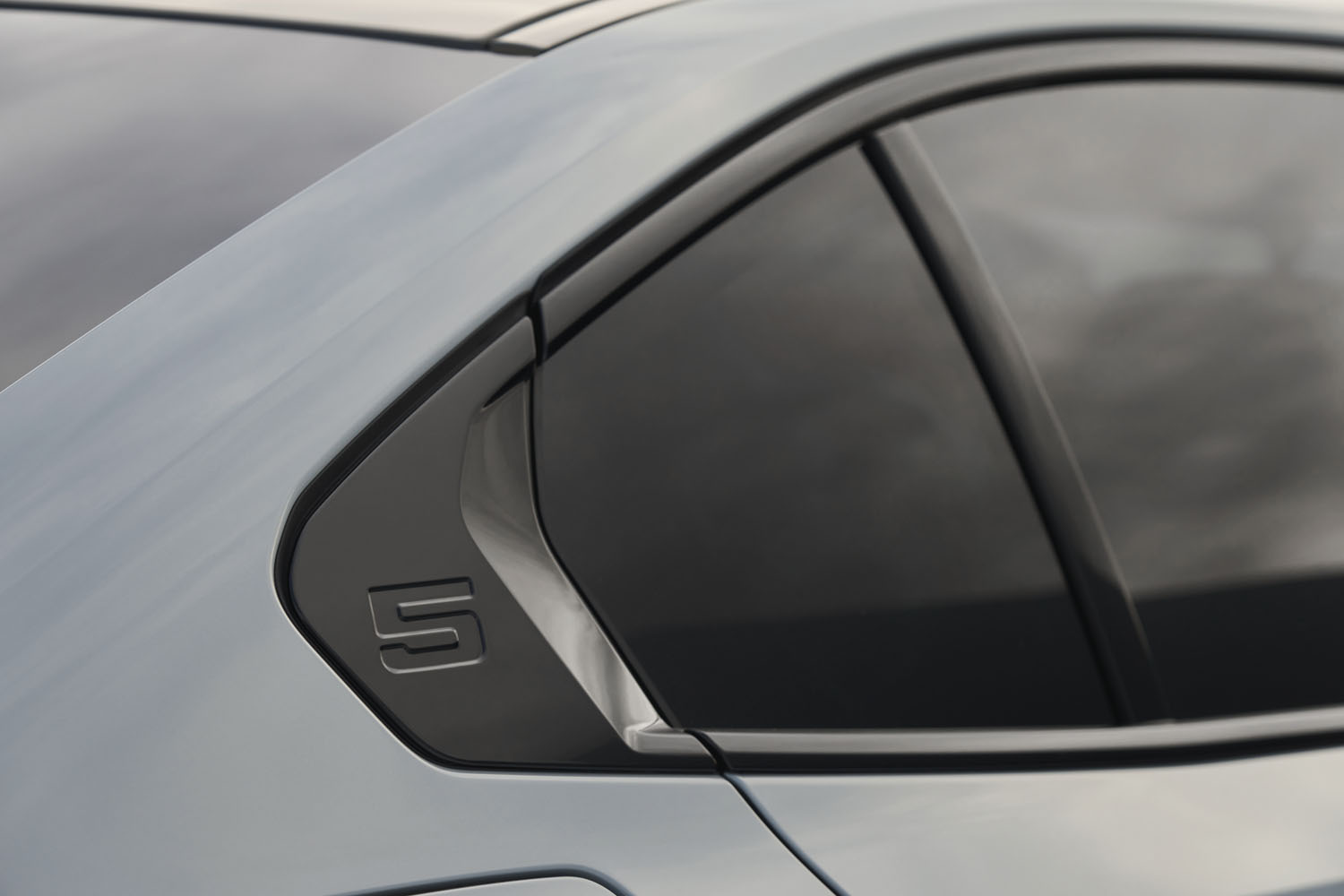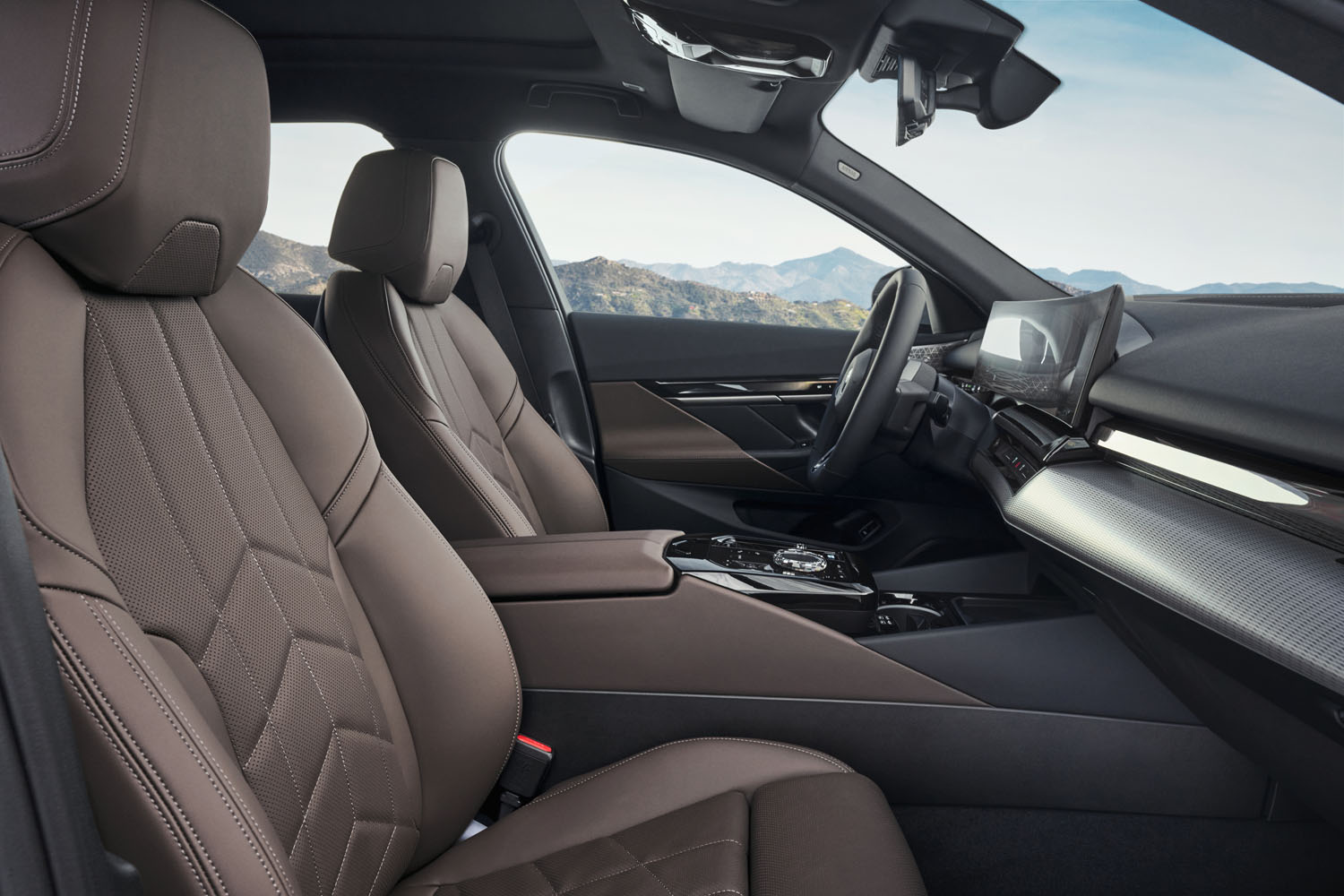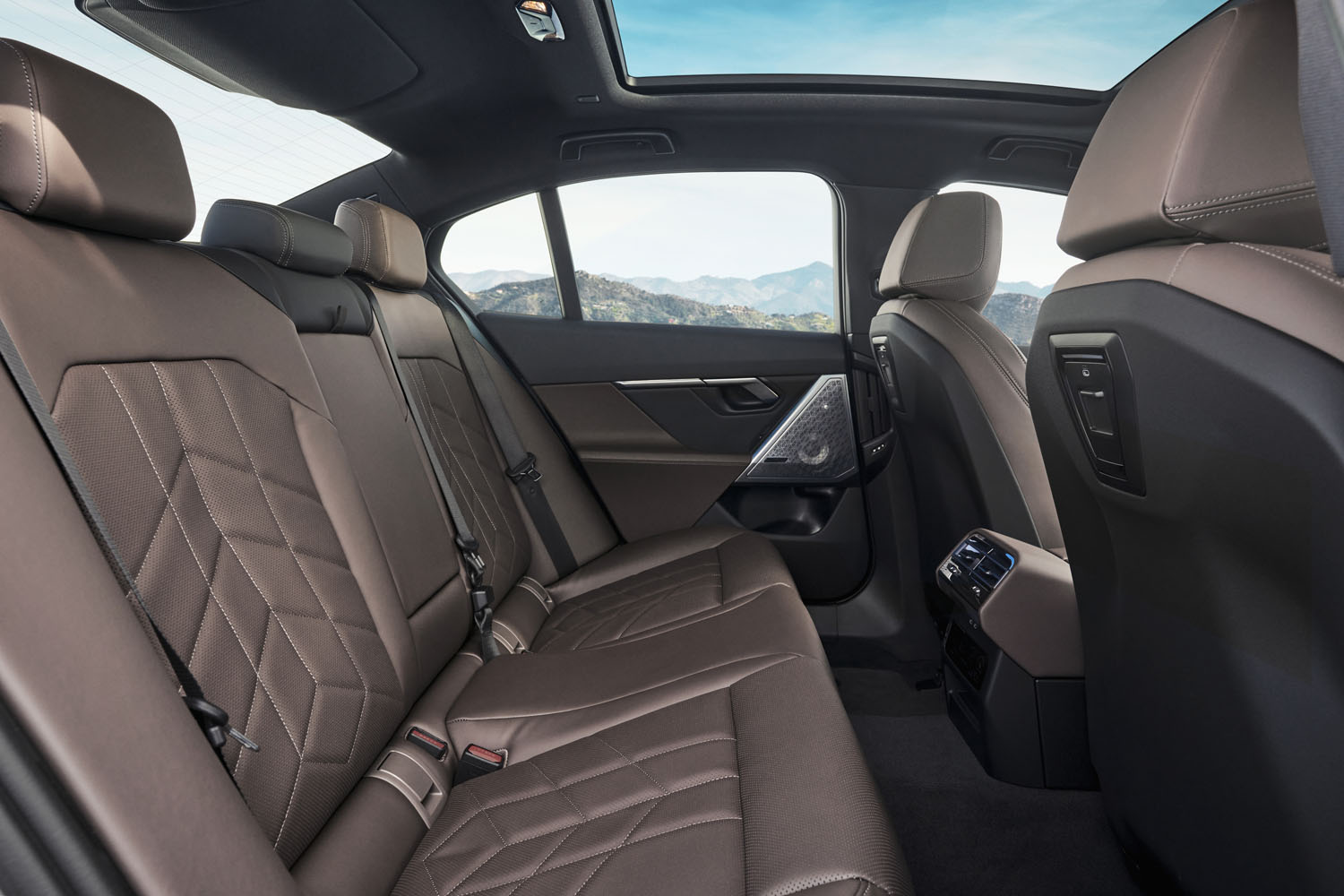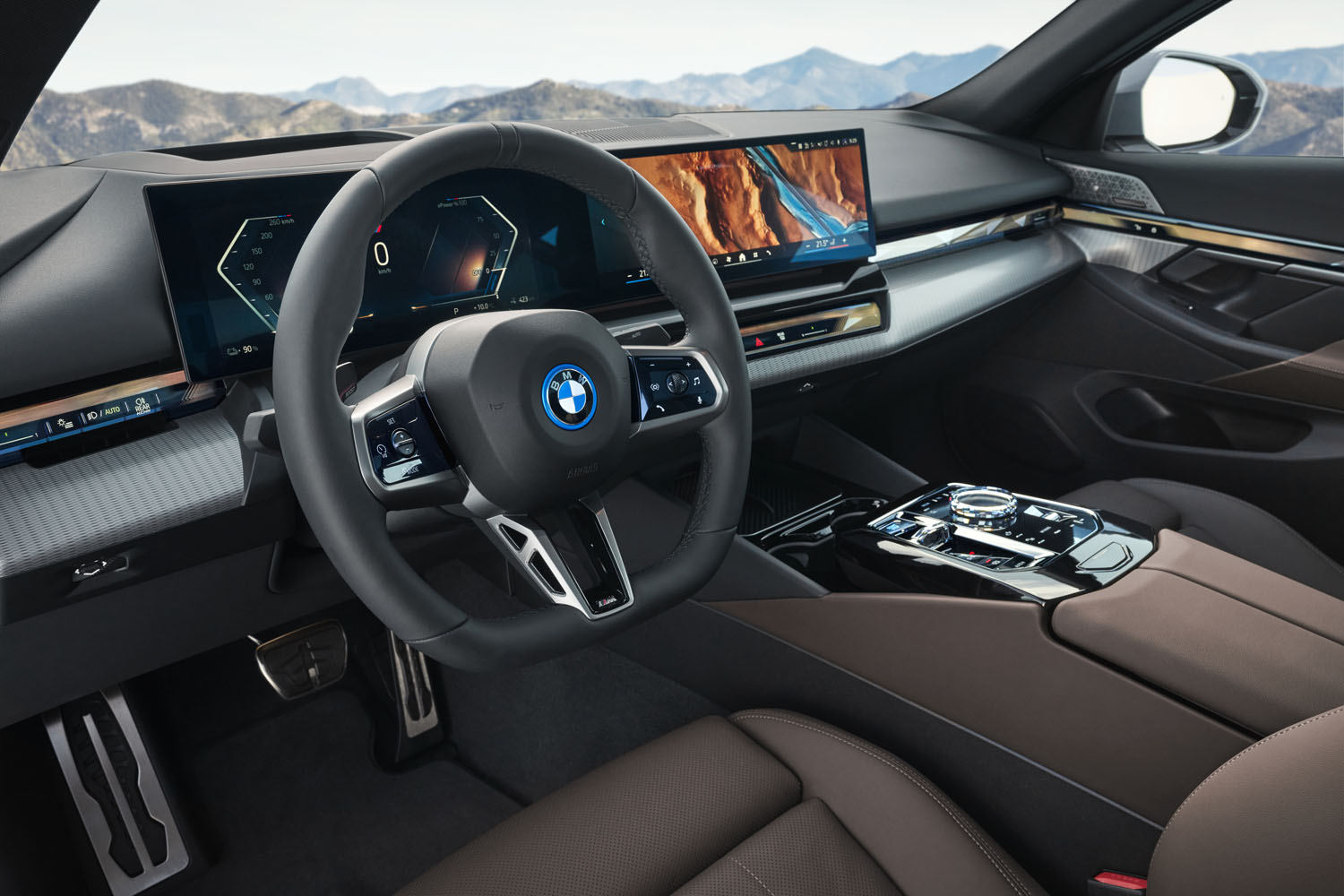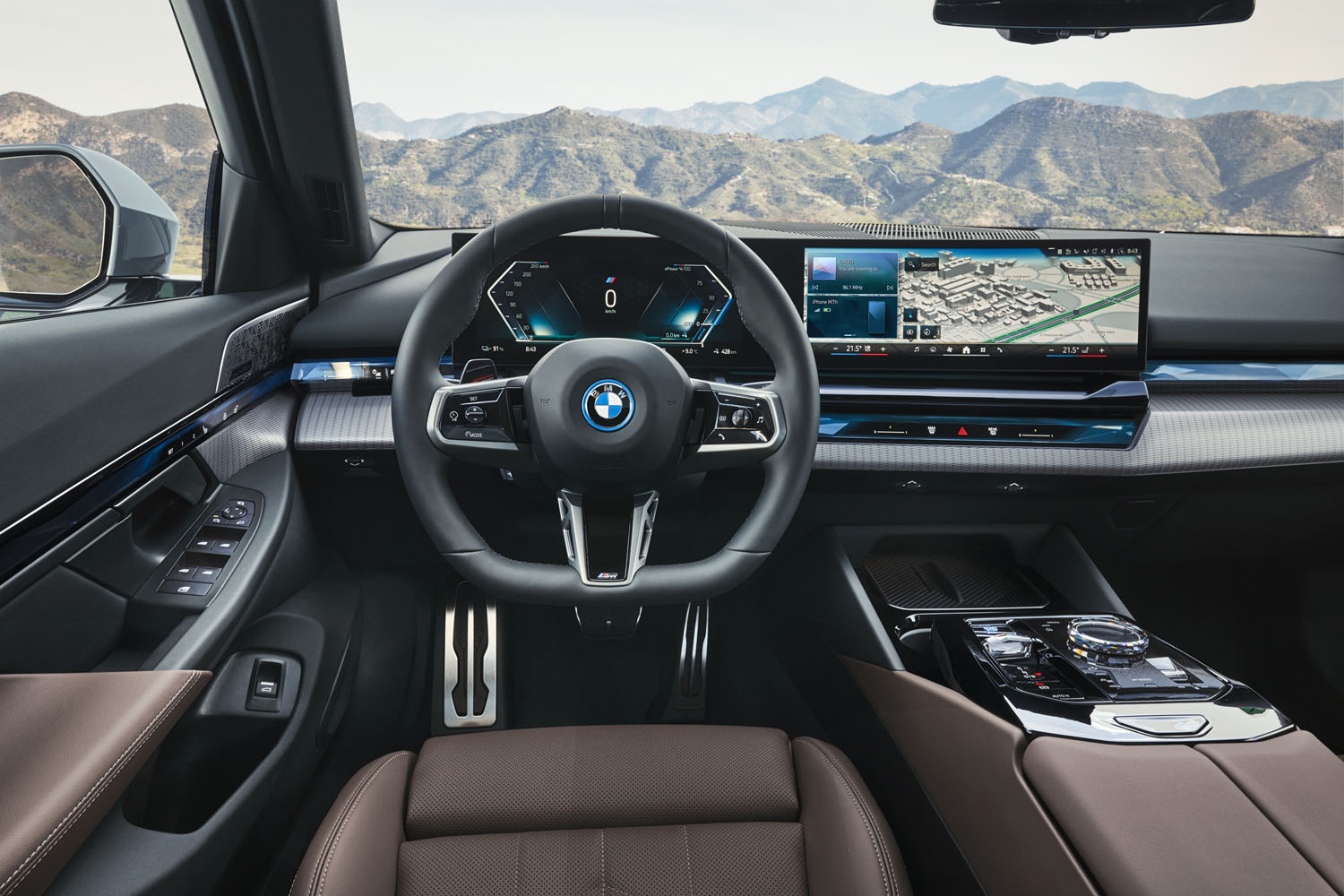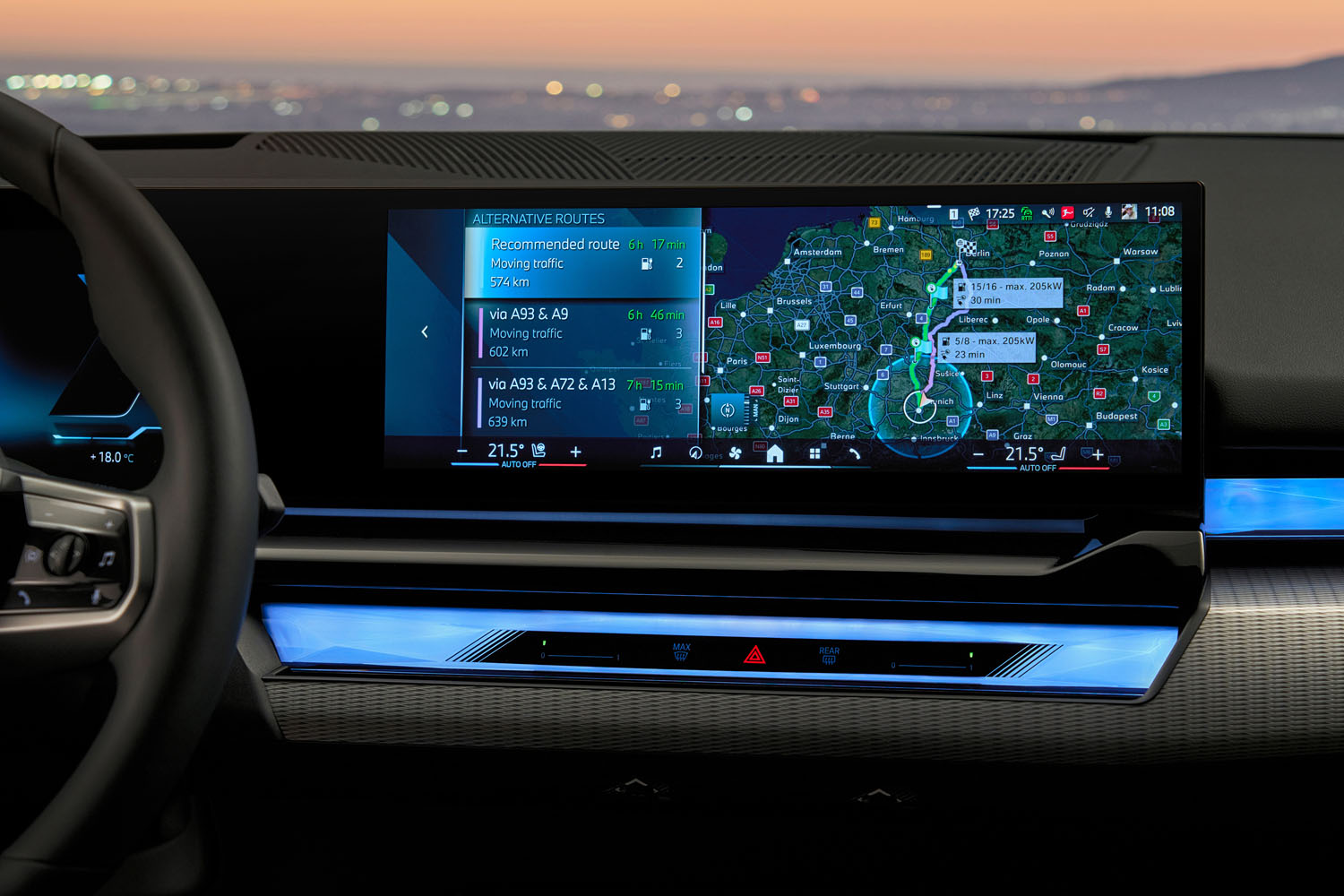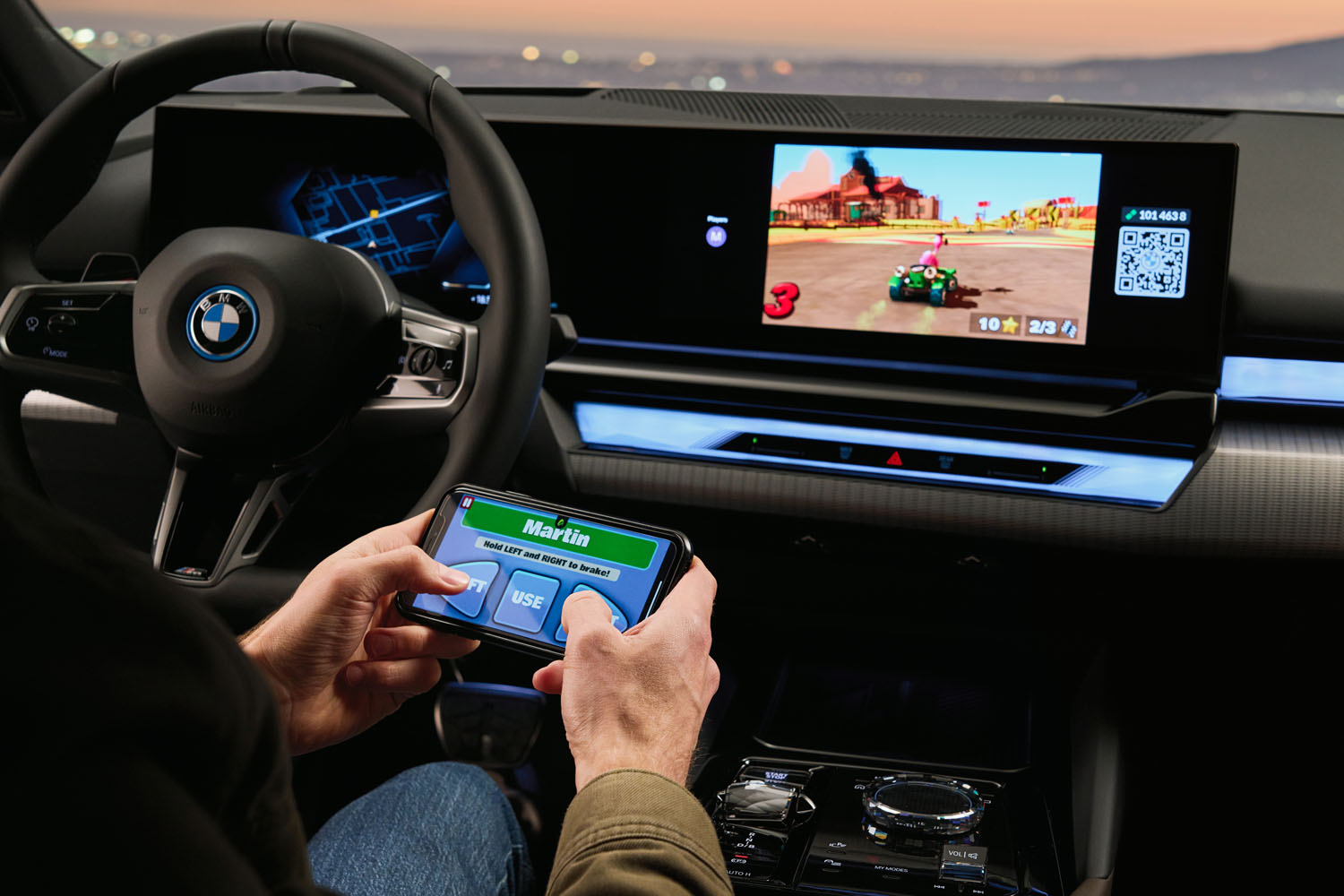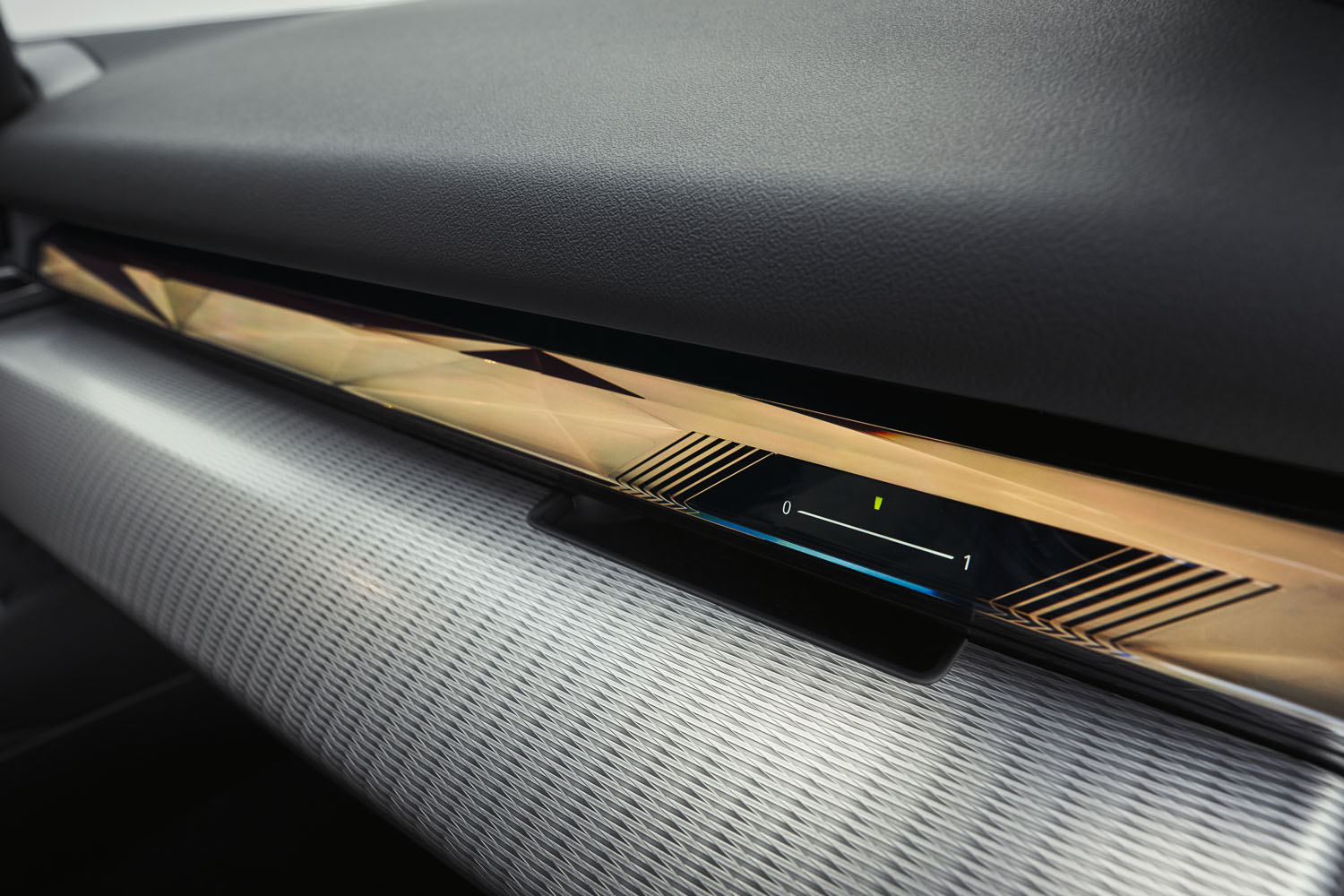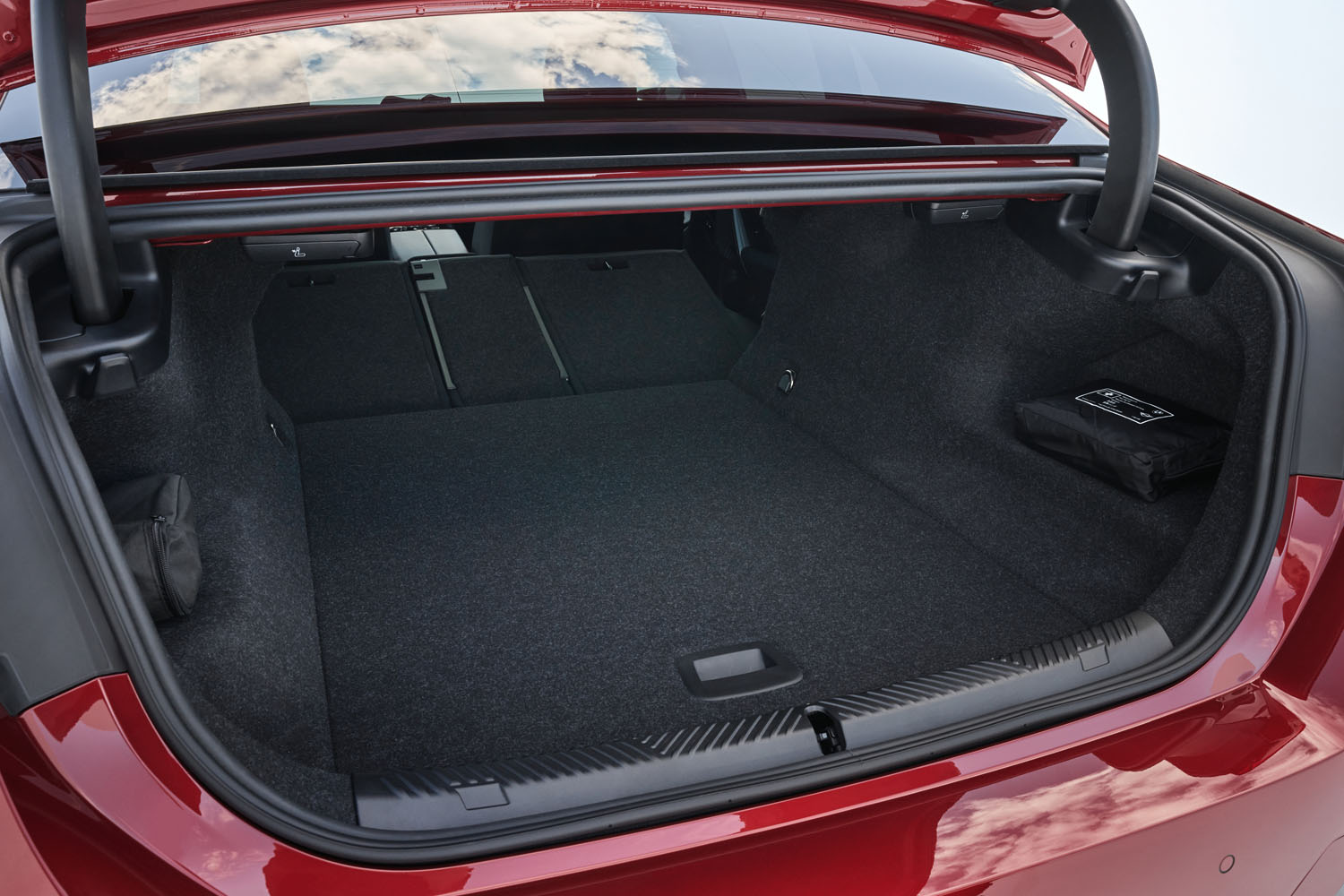
The new 2024 BMW 5 Series is two cars in one. On one hand, there’s the eighth-generation gasoline-powered sedan that will represent the bulk of sales in most markets. On the other hand, for the first time in the nameplate’s long history, there’s an electric version called i5.
BMW developed the i5 and the 5 Series concurrently, and the two cars look pretty much alike with the exception of small, powertrain-specific details such as emblems. Both sedans remain instantly recognizable as members of the Munich-based company’s family, but they’re far less extroverted than, say, the XM. BMW told me that’s intentional: they’re aimed at an audience that prefers a more subtle-looking design.
Going electric forced BMW’s designers to make the i5 slightly taller than the outgoing 5 Series to clear space for the battery pack, and the sedan grew in length and in width as well to retain elegant proportions. It stretches 199.2 inches long, 74.8 inches wide, and 59.6 inches tall.
In turn, the bigger dimensions create a more spacious cabin: BMW notes that the rear-seat passengers enjoy more legroom than in the last-generation 5 Series. The outgoing car doesn’t feel cramped, however, and the technology packed in the i5 is likely to attract more eyeballs than the interior dimensions. The driver faces a big screen called Curved Display that’s already found in the i4, among other recent additions to the BMW range. It’s a frameless, freestanding screen that neatly groups a 12.3-inch digital instrument cluster and a 14.9-inch touchscreen for the Operating System 8.5 infotainment system into a single unit. Apple CarPlay and Android Auto compatibility come standard.
One of the coolest features in the i5 is an in-car gaming system called AirConsole that lets the passengers play a variety of games using their smartphone as a controller. This function only works when the car is stopped, you won’t see an i5 driver racing go-karts while driving down I-15, and BMW notes it should be particularly useful to kill time during charging stops. Approximately 20 games will initially be offered.
BMW has historically offered the 5 Series with different levels of power, and the i5 continues this trend. The entry-level eDrive40 model uses a single, rear-mounted electric motor rated at 335 horsepower and 295 pound-feet of instant torque. Next up is the M60 xDrive, which gains a second electric motor up front for through-the-road all-wheel-drive and a total output of 590 horsepower and 586 pound-feet of torque. Both versions use an 84.3-kilowatt-hour lithium-ion battery pack compatible with 205-kilowatt charging. While the EPA hasn’t tested the i5 yet, BMW estimates a 295-mile driving range rating for the rear-wheel-drive model and a 256-mile rating for the all-wheel-drive car.
Highway Assistant technology included in the optional Driving Assistance Professional package enables what the firm refers to as “attentive hands-free driving” at up to 85 mph. This system doesn’t make the i5 autonomous, it’s not BMW-speak for “nap time,” but it keeps the car moving at a pre-set speed and centered in its lane. BMW is serious about the “hands-free” label: thanks to eye-tracking technology, the Active Lane Change technology also included in the package lets the driver confirm a lane change by simply looking at the right or left door mirror.
Production of the 2024 BMW i5 is scheduled to start later in 2023. Pricing for the eDrive40 starts at $67,795 including a mandatory $995 destination charge, while the M60 xDrive carries a base price of $85,095; it will be the most expensive member of the range at launch.
What about the 5 Series?
BMW isn’t leaving behind the buyers who aren’t interested in going electric. The new 5 Series range will initially include two models called 530i and 540i xDrive. Offered with rear- or all-wheel-drive, the entry-level model ($58,895) uses a turbocharged, 2.0-liter four-cylinder engine rated at 255 horsepower and 295 pound-feet of torque. The all-wheel-drive-only 540i ($65,895) benefits from a 3.0-liter straight-six that’s turbocharged to 375 horsepower and up to 398 pound-feet of torque when an overboost function kicks in.
Both engines are linked to a 48-volt mild-hybrid system, and BMW confirmed that a plug-in hybrid model will arrive in American showrooms in 2024.
